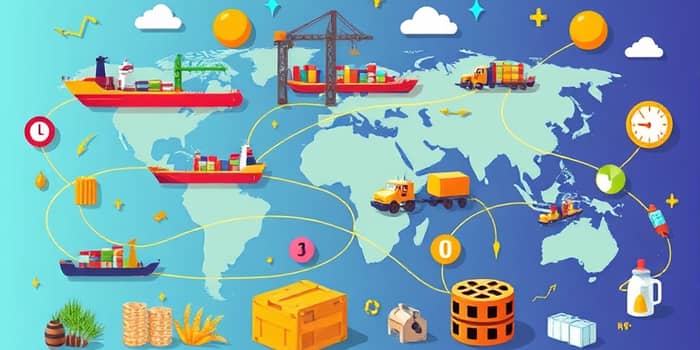
In a world still reeling from pandemic aftershocks and geopolitical tensions, the recent sharp swings in commodity prices have cast a harsh light on the fragility of global supply chains. As prices move to their lowest levels in years, companies and economies are grappling with an unprecedented mix of oversupply, logistical bottlenecks, and market uncertainty.
The period from 2020 to 2024 saw commodity markets oscillate wildly, driven by lockdown rebounds, trade disputes, and climate shocks. Now, forecasts predict a sustained downturn: a 12% global price drop in 2025 and another 5% in 2026, pushing real prices below the 2015–2019 average. This contraction, while easing consumer costs, reveals deep systemic weaknesses.
According to recent World Bank projections, overall commodity prices are set to slip to a six-year low. Energy markets lead the decline, with a forecasted 17% fall in 2025 and a further 6% drop in 2026. Oil, the bellwether, remains under pressure from ample supply outside OPEC+ and sluggish demand growth.
Metals and minerals saw a modest 2.5% rise in early 2024 but are poised for declines into 2026, while agricultural prices are expected to slide by 1% in 2025 and 3% the following year. Precious metals buck the trend, with gold acting as a safe-haven amid geopolitical risks, moderating overall volatility.
The forces shaping these shifts are multifaceted. First, increased production outside OPEC+ and improved mining outputs have swelled global supplies. Second, policy uncertainties—tariffs, trade barriers, and shifting regulations—are dampening investor confidence and trade volumes. Third, a projected global economic slowdown under tighter financial conditions is sapping demand across sectors. Finally, persistent weather and climate risks threaten agricultural yields, even as overall crop prices drift downward.
This decade may prove the most volatile since the 1970s, with supply chain resilience tested at every link. Shipping costs surged by 77% from early 2021 to mid-2022, while port congestions and truck driver shortages continue to delay deliveries and inflate expenses.
Manufacturers reported profit losses up to 13% due to logistical snags and parts shortages. Storage capacity has become a double-edged sword: overstocking to buffer uncertainty ties up working capital and risks spoilage, while understocking intensifies order backlogs and customer dissatisfaction.
Tariffs and regulatory unpredictability compound these challenges. Unexpected levies raise input costs, force firms to seek alternative suppliers, and can spark sudden shortages in critical materials. In agriculture, perishability issues magnify the impact of border delays, leading to waste and price spikes at the retail end.
Every commodity sector feels the strain differently. Energy sees oversupply battles against slow demand growth. Metals contend with tariff hikes and rising production costs. Agriculture battles perishable logistics and climate variability. Livestock and dairy prices sway with feed input costs, and precious metals ride waves of investor sentiment.
In the face of this uncertainty, businesses are adopting proactive measures. Strengthening supply chain visibility and agility is no longer optional—it’s a strategic imperative. Companies that invest in real-time analytics and cross-border coordination report faster reaction to market shocks.
Building operational resilience through diversification helps avoid single-source dependencies. Firms also boost redundancy by qualifying multiple suppliers, expanding storage buffers, and pre-negotiating logistic contracts to lock in capacity at predictable rates.
The end of the post-pandemic commodity boom ushers in a period of declining prices and heightened supply chain complexity. Developing economies, reliant on commodity revenues, face serious fiscal stability risks as export earnings contract. Companies must remain vigilant against deeper-than-expected global slowdown and potential climate or geopolitical shocks that could trigger fresh disruptions.
Emerging technologies such as AI-driven supply chain optimization offer promise but remain in early stages. For now, the combination of rigorous risk management, strategic flexibility, and collaborative partnerships will determine which organizations navigate the downturn most successfully. As markets adjust to this new normal, the lessons learned from recent volatility will shape the next generation of resilient, adaptive supply chains.
References













